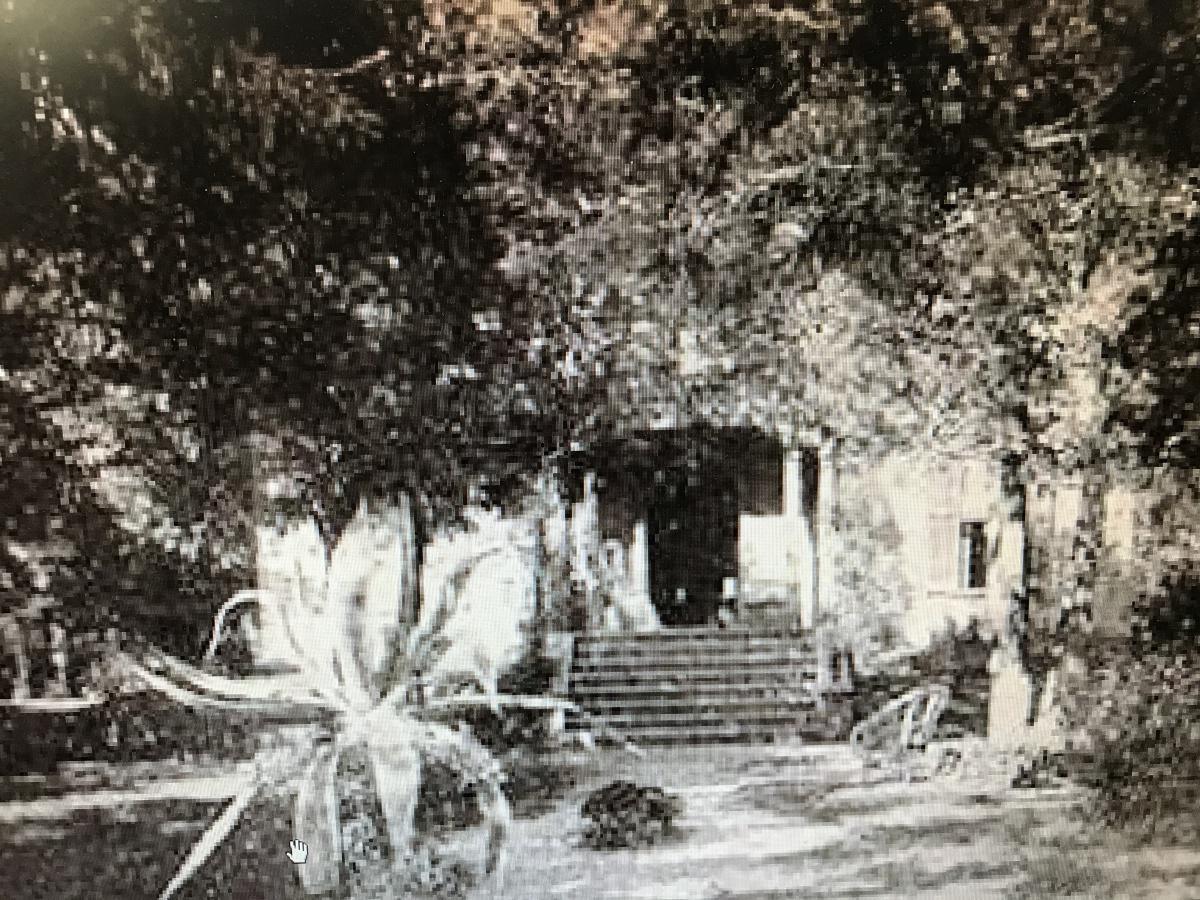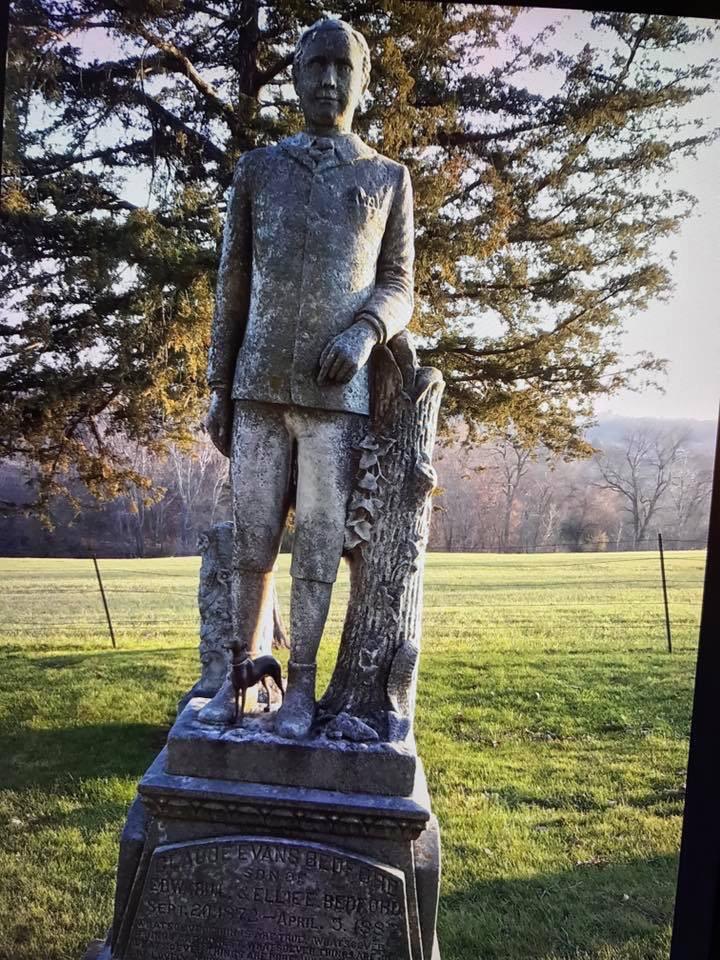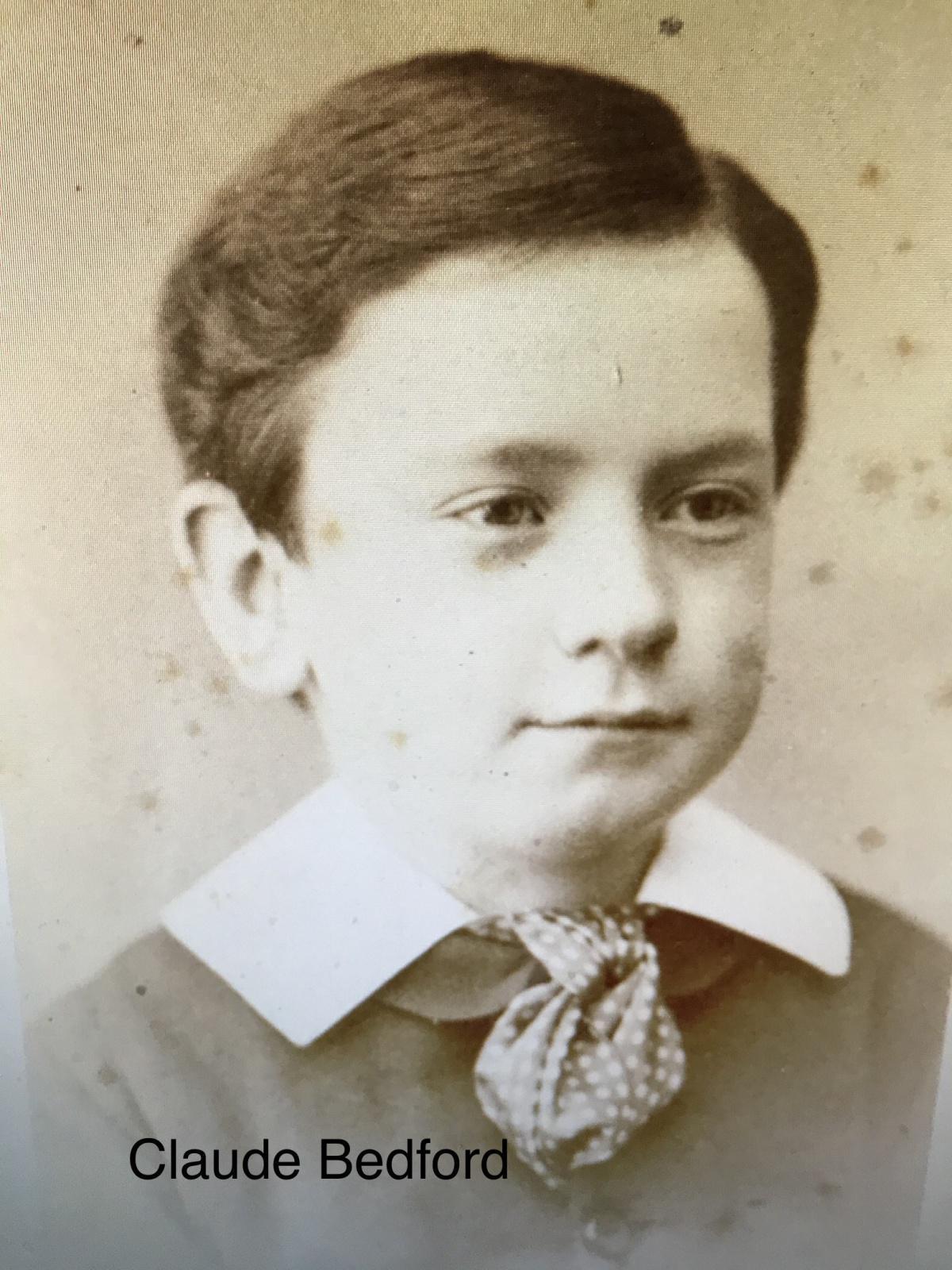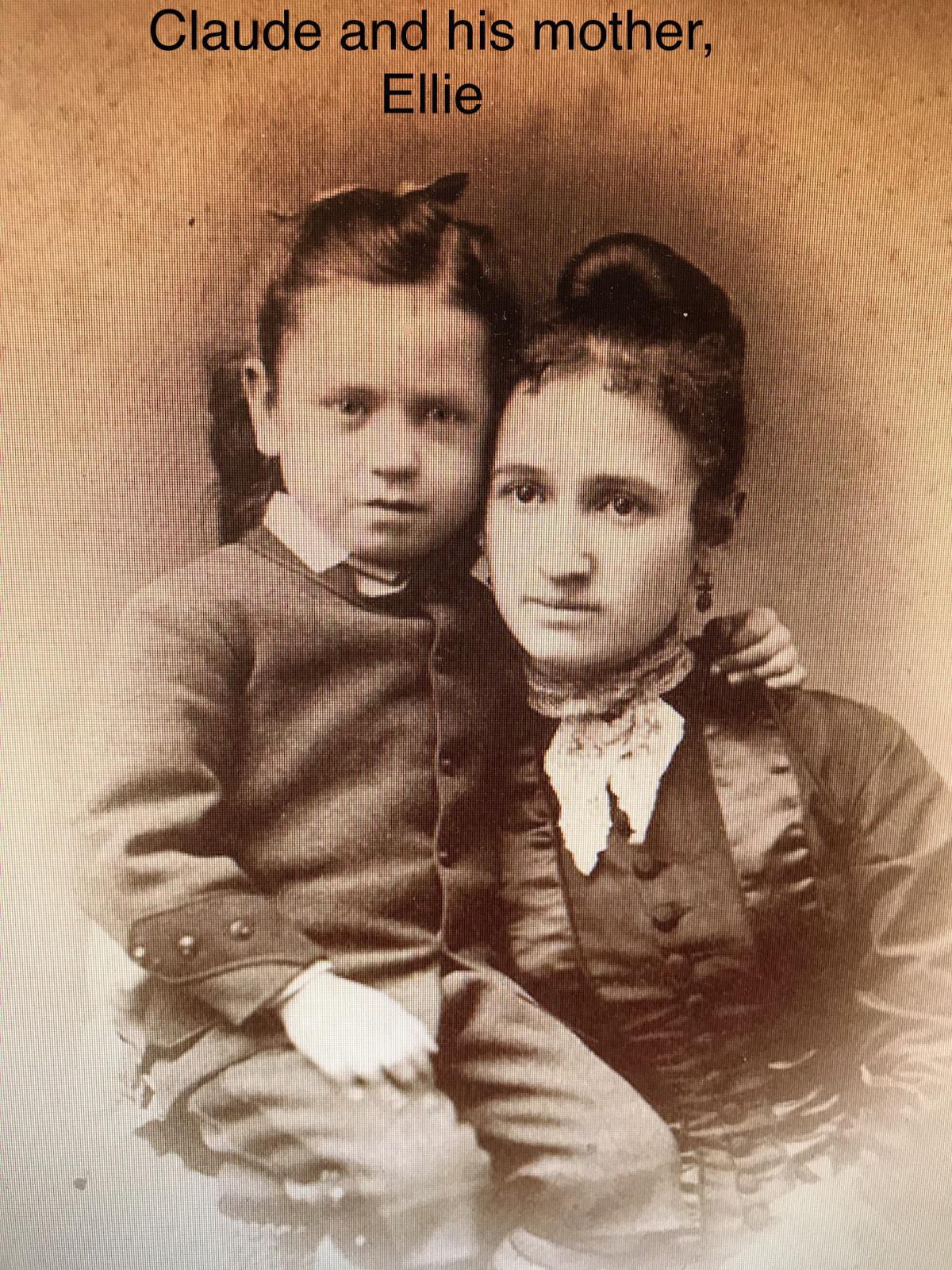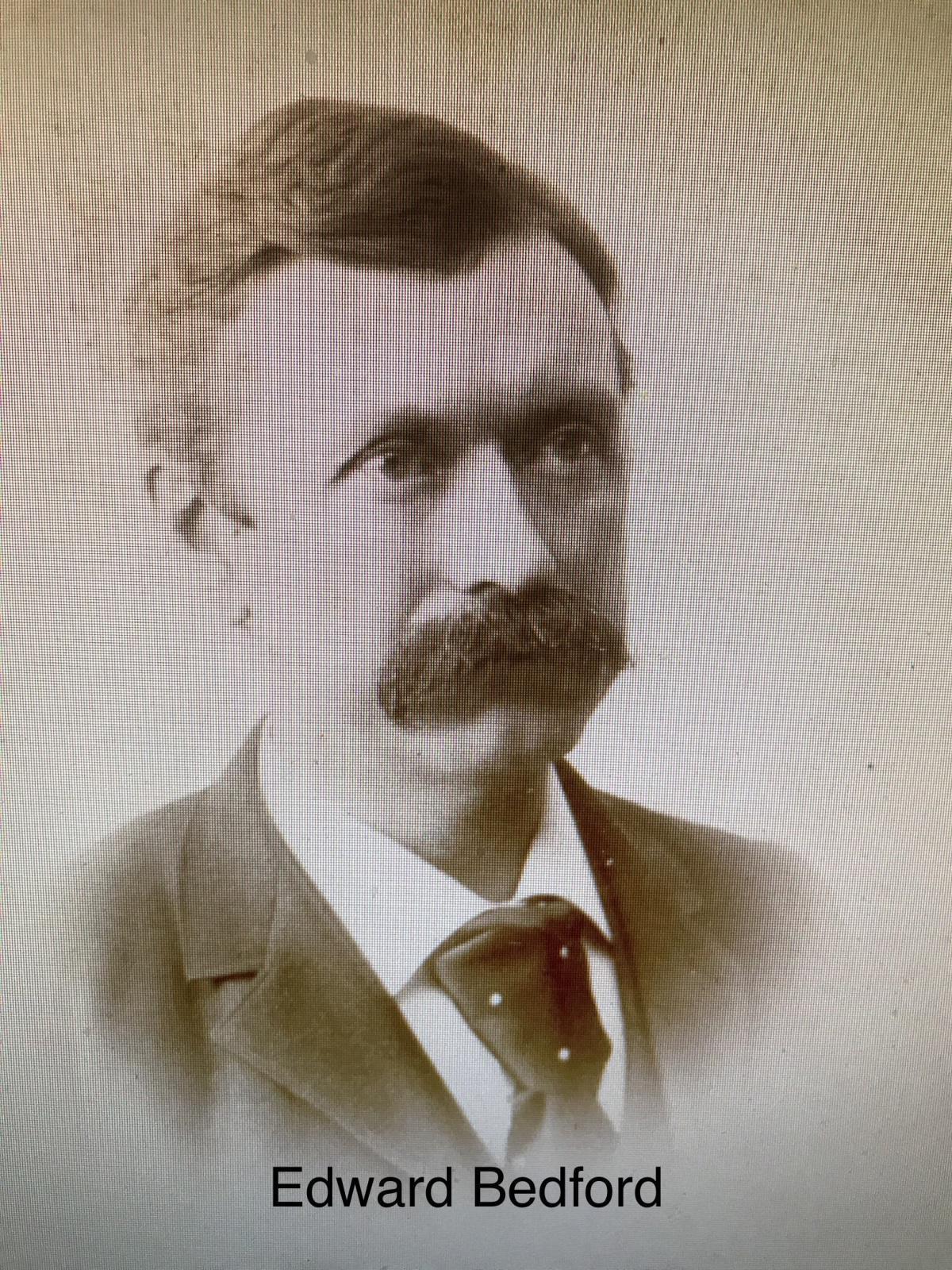11405 US Highway 20
The Bedford House is a house with an interesting story. It was constructed in 1850 by William Green. It was quite beautiful with a solid walnut staircase and crystal chandeliers. The original leaded glass front door, which is now 170 years old, has welcomed many families over the years.
Edward Bedford was an early owner of this house. He lived here with his wife, Ellie, and son, Claude, for many years. It was said the family loved their home.
One of my favorite tombstones in Greenwood Cemetery is Claude Bedford’s. The heartbreaking story I am sharing is from the Telegraph Herald, Dubuque, Iowa, Sunday, July 22, 1979.
Even though this is not about ghosts, it is a touching story about the spirit of a beloved boy that lived on in his mother’s heart.
“Claude Evans Bedford, a relic of love and anguish, stands straight and terribly still in the oldest corner of Greenwood Cemetery.
He leans softly against a carved stone stump, but he doesn’t need its support. Claude is solid marble. He has stood here since 1887.
His knickers and shoes have neat little marble buttons, and a marble kerchief fluffs from the pocket of his suitcoat. His wavy hair, a brilliant auburn in life, is meticulously detailed and a stony, bony gray.
His parents, Edward and Ellie Bedford, settled along the road just north of Galena in 1873, the year of his birth. The undulating countryside reminded both of them of their childhoods in upstate New York.
Edward was a brilliant and distinguished attorney, a graduate of the University of Michigan’s law school. He served two terms as state’s attorney of Jo Daviess County. The more intricate a case became, the more Edward Bedford chased its fine points of law.
Ellie was an artist, sculptor, a fervent student of theology, a doer. She composed letters of clever poetry to friends. She enjoyed her quietly elegant little mansion, and she called it Baumheim, German for “Home of the Trees.”
Claude was her beloved, idol, born in the second year of their marriage. He was bright, he played the flute and to please his mother, he posed in the studio for paintings she came to cherish. Friends chided him for his curled locks, but he kept his hair as Mother Ellie liked it.
He was 14 years old when he fell ill on Sunday, April 3, 1887. hjHis parents fretted helplessly as his condition soured. The next day he turned delirious, moaning his way toward death by spinal meningitis. He passed at 6 a.m. on Tuesday, April 5, 1887.
Despite fears of contamination from the corpse, his schoolmates all attended the funeral. They watched his coffin and slip beneath a knoll at the cemetery.
The Bedfords were shattered, but Ellie did what she could. Working from her paintings she designed a life-size statue of Claude. She commissioned monument architect William V. Gill of Dubuque to carve it. She insisted that it be a precise replica, almost a reincarnation of her son. And on its base she put a biblical quotation:
Whatsoever things are true,
Whatsoever things are honest,
Whatsoever things are just,
Whatsoever things are pure,
Whatsoever things are lovely,
Think on these things.
But Edward and Ellie Bedford did not think on these things alone. They thought of Claude.
Edward burrowed farther into his work, hoping vainly to separate himself from his agony. By 1894 he was suffering from a nervous and cerebral affection,” as the writer of his obituary would put it. His doctor ordered a rest, so Ellie packed him off to Bermuda. He died there in 1895 at age 50. Ellie brought his body home and buried him at the foot of Claude’s statue.
Ellie Bedford stayed at Baumheim, ever near her dead son and husband. As always, she kept Claude’s portrait over the mantlepiece in her living room.
By now she was a quiet, reserved woman whose life was a blend of painting, sculpting, reading, wood carving and gardening. Occasionally she hosted the ladies from her horticultural club. She traveled overseas three times, but always she return to Galena.
Folks came to think of her as an eccentric. She often rode her horse to town for supplies, and after the horse died, she walked alone.
She took assiduous care of her home, and when its roof leaked, she crawled atop the shingles to fix it. She spent many days sitting, dressed in browns and lavenders, on Baumheim’s front porch.
She died in 1933. Her obituary said she was 83, but friends thought she might have been older. She never had revealed her age, and her tombstone lists no date of birth.
She had written a guest list for her private funeral. On her deathbed she had asked Katherine Norris, the daughter of her good friend Helen, to sing “Mother McCree” and “Lead Kindly Light” before she, too was buried beneath the statue in Greenwood Cemetery.
When members of the Norris family cleaned out Baumheim, they found Claude’s upstairs bedroom closed and absolutely untouched in the 46 years since his death. Ellie Bedford could travel the world over and fix her roof to boot, but she couldn’t face her little boy’s belongings.”


